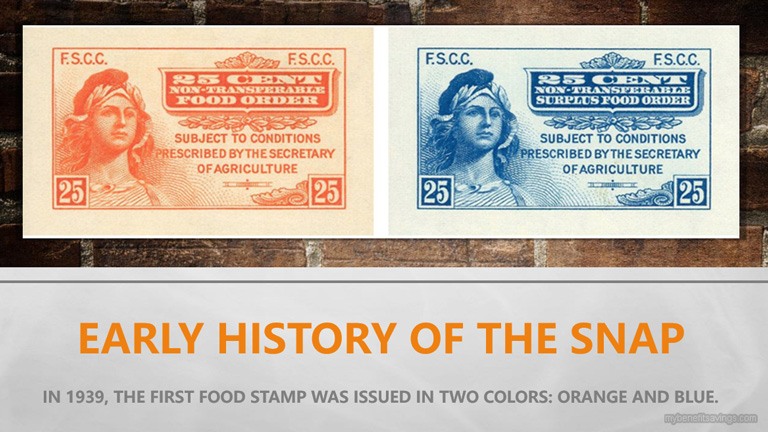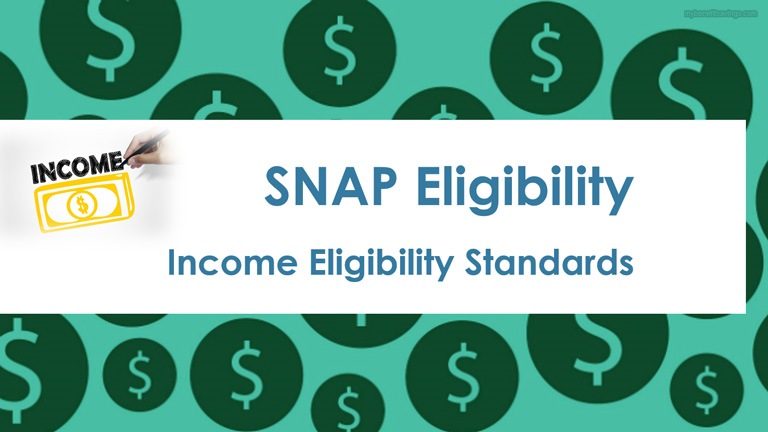Many Americans might assume hunger is only a problem in developing countries and they find it hard to believe that food insecurity still exists in the United States in the 21st century. According to the statistics posted on the United States Department of Agriculture (USDA), 11.1 percent of households suffered from food insecure in 2018, among which 6.8% (approximate 8.7 million) were households with low food security and 4.3% (approximate 5.6 million) were households with very low food security.
To improve food security and reduce hunger in the United States, USDA Food and Nutrition Service (FNS) administrates fifteen nutrition assistance programs including Child Nutrition Programs, Food Distribution Programs, Nutrition Programs for Seniors, Supplemental Nutrition Assistance Program (SNAP), Women, Infants, and Children Hunger and Food Security Resources (WIC), FNS Nutrition Programs, etc. Supplemental Nutrition Assistance Program is the largest federal program that increases food availability and provides better food access. This article gives a brief introduction of the Supplemental Nutrition Assistance Program and keep reading to know more about it.
What is the Supplemental Nutrition Assistance Program (SNAP)?
The Supplemental Nutrition Assistance Program (SNAP), formerly and still widely known as the Food Stamp Program, is the federal anti-hunger project that provides nutrition assistance for low-income Americans. By increasing food purchasing capacity and improving food access, the Food Stamp Program aims to alleviate hunger and move people from welfare towards self-sufficiency. SNAP is administrated by the U.S. Department of Agriculture (USDA) and financed together by federal and state governments. In 2019, the average monthly participation is 37.9 million, and enrollees could enjoy average monthly benefits of $123.50 per person.
Early History of the SNAP
Federal Surplus Relief Corporation (FSRC) is the foundation of the Supplemental Nutrition Assistance Program (SNAP). As a part of the Agricultural Adjustment Act, FSRC was signed into laws by President Franklin D. Roosevelt in 1933 during the Great Depression and was changed to Federal Surplus Commodities Corporation (FSCC) in 1935 by charter amendment.
To build a bridge between farmers with excess supply and city folks who are under-nourished, FSCC has created an innovative solution by purchasing surplus crops and livestock at discount prices and distributing them to the needy people nationwide. In 1939, the first food stamp was issued in two colors: orange and blue. Orange stamps could be used to buy any food without limitation while the blue stamps could be only spent on designated surplus foods like dairy products, beans, and citrus fruits. Recipients could receive an additional 50 cents worth of blue stamps in return when they spend every $1 worth of orange stamps. Nowadays, the electronic benefits transfer (EBT) cards have replaced the outdated paper food stamp coupons and made food purchases more convenient.

SNAP Eligibility
Compared to other government programs, SNAP is easier to apply and available for most applicants. According to the research, approximately one in nine of the Americans, which equals 12% of the total population, have received SNAP benefits and stretched their food budgets in the fiscal year 2019. Broad-based categorical eligibility (BBCE) and regular eligibility are the two primary pathways to qualify for SNAP. In 2020, 43 states have implemented BBCE to expand SNAP eligibility and allowed their residents who are receiving benefits from the Temporary Assistance for Needy Families (TANF), or State maintenance of effort (MOE) to be deemed “categorically” eligible. You could check more information about categorical eligibility at USDA Food and Nutrition Service, and this article mainly focuses on how to qualify for SNAP under traditional eligibility rules.
In traditional form, applicants must meet gross income limits, net income limits, and resource limits.
-
Income Eligibility Standards
Applicants must meet both gross and net income requirements to qualify for SNAP benefits. Gross income is the amount of money you earned before taxes or any allowable deductions. Generally, the maximum gross monthly income should be no more than 130% of the federal poverty level (FPL) for program eligibility. Net income, or net earnings, refers to the amount of money left after allowable subtractions and deductions from gross income. And the net monthly income must be at or below 100% of the federal poverty level (FPL) for program eligibility.
SNAP income eligibility criteria might be adjusted at the beginning of each Federal fiscal year and since Alaska and Hawaii have a higher federal poverty level, the income limits are slightly higher in these two states. Below are SNAP income eligibility guidelines effective from October 1st, 2019, through September 2020.
| Figure 1 Federal SNAP Income Limits in 48 States, District of Columbia, Guam, Virgin Islands | ||
| Persons in Household | Gross Monthly Income Limit | Net Monthly Income Limit |
| 1 | $1,354 | $1,041 |
| 2 | $1,832 | $1,410 |
| 3 | $2,311 | $1,778 |
| 4 | $2,790 | $2,146 |
| Persons over four | Add $479 for each additional family member | Add $369 for each additional family member |
| Figure 2 Federal SNAP Income Limits in Alaska and Hawaii | ||
| Persons in Household | Gross Monthly Income Limit | Net Monthly Income Limit |
| 1 | Alaska: $1,690
Hawaii: $1,558 |
Alaska: $1,300
Hawaii: $1,199 |
| 2 | Alaska: $2,290
Hawaii: $2,109 |
Alaska: $1,761
Hawaii: $1,622 |
| 3 | Alaska: $2,889
Hawaii: $2,659 |
Alaska: $2,222
Hawaii: $2,045 |
| 4 | Alaska: $3,488
Hawaii: $3,209 |
Alaska: $2,683
Hawaii: $2,469 |
| Persons over four | Alaska: Add $600 for each additional family member
Hawaii: Add $551 for each additional family member |
Alaska: Add $461 for each additional family member
Hawaii: Add $424 for each additional family member |
To protect the vulnerable population, there are some special rules for the elderly or disabled. Households with a member who is 60 years of age or older, or has a disability could only meet the net income test to receive SNAP benefits. Besides, elderly or disabled members who qualify for a separate SNAP household could have gross monthly income limit up to 165 % of the Federal Poverty Level (FPL), which is 35% higher than the normal household standard.

-
Assets Eligibility Standards
Assets are the possessions that an individual legally owns and could be easily converted to cash. Countable assets are the assets considered when determining eligibility for SNAP including but not limited to cash, bank account, bond, stocks, and real estate. Certain assets such as personal possessions, a home and lot, Supplemental Security Income or TANF benefits, and most retirement plans are not counted as SNAP resources. Applicants must meet the assets limit to be eligible for SNAP benefits. Generally speaking, households must have no more than $2,250 in countable assets, or below $3,500 if there is at least one senior member (60 or older), or disabled member in the household.
However, states have the flexibility to determine what kind of assets could be considered as household resources within broad Federal guidelines. Some states like Alabama, California, District of Columbia, Hawaii exempt the value of all vehicles for the SNAP asset test, while in other states like Nevada, Pennsylvania, Arkansas, Iowa, exempt the value of at least one vehicle from household resources. You could find more information available at your local SNAP office or click on the website SNAP State Directory.
How to calculate SNAP Benefits Amounts?
The calculation for SNAP benefits is simple and straightforward. Basically, household size and monthly net income are the two factors influencing the benefit amount a household could get.
Food stamps caseworkers subtract 30% of the household’s net monthly income, which is an amount SNAP expects households to pay on their own for food spending, from the maximum monthly allotment. Households without net income could receive the full SNAP benefits. The maximum monthly benefit is based on the Thrifty Food Plan (TFP), which specifies minimal food costs to provide a low-cost diet with adequate nutrition for a household. The figure below illustrates the SNAP maximum monthly allotment in the federal fiscal year 2020.
| Figure 3 SNAP Maximum Monthly Allotment Based on Household Size | |
| Persons in Household | Maximum Monthly Allotment |
| 1 | $194 |
| 2 | $355 |
| 3 | $509 |
| 4 | $646 |
| Persons over four | Add $146 for each additional family member |
SNAP maximum monthly allotments are consistent in 48 states and the District of Columbia. Other states of Alaska, Hawaii, Guam, and the Virgin Islands have higher SNAP benefits due to the difference in maximum allotments, deductions, and income eligibility standards. You could click on the website at USDA Food and Nutrition Service for more information.

How to apply for SNAP Benefits?
SNAP application could be completed either online or in-person at the SNAP office. Since each state has its own application forms and process, it is strongly recommended to contact a local SNAP office in your state.
When filling the application, households must provide relevant documents and information for verification including identification, immigration status, proof of residence, household composition, proof of income for all household members, proof of dependent care expenses, rent receipts or proof of mortgage payments, utility costs records, medical bills for household members age 60 or older, and medical bills for household members who are receiving disability benefits. After submitting the SNAP application, applicants are often asked for an eligibility interview, which could be conducted by telephone, face to face, or home visit.
The time limit for processing SNAP applications is thirty days. However, households qualified for expedited services or emergency SNAP could receive benefits within seven calendar days from the date of application. Applicants approved for SNAP benefits would be issued an electronic benefit transfer (EBT) card and there are around 248,000 stores in America that accept SNAP EBT including superstores, supermarkets, grocery stores, conveniences, and farmers markets. SNAP allotment is transferred electronically in the account on a monthly basis and household members could use it to purchase any food or food product for home consumption. Households are not allowed to use EBT on liquor, tobacco, supplements, hot foods, pet foods, cleaning supplies, hygiene products, cosmetics, or any other ineligible foods. Households rejected for SNAP benefits could request a hearing by filling out an Administrative Hearing Request form (MSC 0443) by phone, in writing, or in-person at a local SNAP office within ninety days from the notice date. Applicants are often requested to present more information for SNAP reevaluation and the denial might be repealed if the decision turns out to be made inappropriately.










Leave a Reply